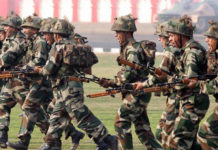Troubled waters: On the tensions between China and the Philippines
China should adopt dialogue to resolve disputes with neighbours
Tensions between China and the Philippines soared on Tuesday after Manila spoke of China’s “reckless and illegal” actions in the South China Sea, blocking its resupply mission. According to the Philippine Coast Guard, its boats were stopped near Second Thomas Shoal, where a group of sailors have been living on board a warship that was sunk by the Philippine forces 25 years ago to reinforce their sovereignty claims. One of the Philippines’s boats suffered “minor structural damage” in the incident, the Coast Guard said. There have been repeated incidents between Chinese and Philippine Coast Guards in the South China Sea. In September last year, Philippine forces removed a 300-metre floating barrier installed by China near the disputed Scarborough Shoal, which triggered a warning from Beijing. In Tuesday’s incident, China blamed the Philippines, saying its ships had illegally intruded into the waters around the Shoal. The source of the problem is contesting claims. China claims almost all of the South China Sea. It seized Scarborough Shoal, a triangular reef encircling a resource-rich lagoon, from the Philippines in 2012. Manila got a favourable ruling from the Permanent Court of Arbitration in The Hague over the Shoal but Beijing ignored it. The Philippines sends regular resupplies to Second Thomas Shoal, known as Ren’ai Jiao in China, which lies about 200 km from the Philippine island of Palawan. But in recent months, activities by Chinese vessels around the Shoal have enhanced tensions.
What is adding to the tensions is the overall deterioration in ties between the two countries. When China took over the Scarborough Shoal, the Philippines was cautious not to provoke its giant neighbour further. Rodrigo Duterte, the former President, constantly tried to play down tensions, but President Ferdinand Marcos Jr., who assumed office in June 2022, took a different approach. He strengthened the Philippines’s strategic and defence cooperation with the U.S., angering Beijing. The U.S. now has access to nine Philippine military bases, and last year, Manila hosted its largest military exercise with the U.S. In the long term, Mr. Marcos Jr. wants to bolster the Philippines’s defence capabilities and strengthen its strategic standing in the region, while in the short term, he seems ready to stand up to China’s coercive moves to protect his country’s sovereignty claims. On the other side, China sees the growing U.S.-Philippines ties as a key challenge and has accused Washington of using Manila as a “pawn”. But China should realise that its sweeping unilateral claims over the South China sea and coercive steps towards its neighbours are not winning it any friends in the region. Instead, Beijing should opt for benign engagement and dialogue to address the disputes in one of the busiest waters in the world.
















